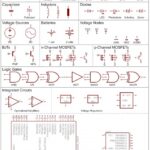Are you having trouble connecting your Obd2 Device to your iPhone? You’re not alone. Many users encounter issues when trying to pair Bluetooth OBD-II scanners, like the ELM327, with iOS devices. Let’s explore why this happens and what you need to know about OBD2 devices.
What is an OBD2 Device?
An OBD2 device, short for On-Board Diagnostics II device, is a tool that plugs into your car’s OBD2 port. This port is essentially an access point to your vehicle’s computer system. Think of it as a gateway to a wealth of information about your car’s engine, performance, and overall health. By connecting an OBD2 device, you can read diagnostic trouble codes (DTCs), monitor real-time engine data, and gain insights into various vehicle parameters. This is incredibly useful for car owners, DIY mechanics, and professional technicians alike.
ELM327 and Bluetooth Connectivity
The ELM327 is a popular type of Bluetooth OBD-II transceiver dongle. Its compact design and wireless capabilities make it a convenient option for many users. The idea is simple: plug the ELM327 into your OBD2 port, pair it with your smartphone or computer via Bluetooth, and use a compatible app to access your car’s data. This eliminates the need for cumbersome wires and allows for easy, on-the-go diagnostics. Many applications are compatible with ELM327 devices, supporting platforms like Windows and Android, offering a range of functionalities from basic code reading to advanced performance monitoring.
The iOS Compatibility Challenge
Here’s where the frustration often begins. While ELM327 devices generally work smoothly with Android devices, pairing them with iPhones and iPads can be problematic. Users often find that when they search for Bluetooth devices in their iPhone settings, the ELM327 scanner simply doesn’t appear. This makes establishing a connection and utilizing OBD2 apps on iOS devices seemingly impossible. In contrast, the same ELM327 device will typically be instantly recognized and paired with an Android phone, allowing for seamless data retrieval using OBD-II compatible applications.
Why the Discrepancy with iOS?
The question remains: why does this Bluetooth pairing issue primarily affect iOS devices? While there’s no single definitive answer, several factors could contribute to this incompatibility. Apple’s Bluetooth protocol implementation and security restrictions might differ from Android, potentially creating hurdles for certain types of Bluetooth devices like some ELM327 scanners. It’s also possible that some ELM327 devices utilize Bluetooth profiles that are not fully supported or readily accessible by iOS. This technical difference in Bluetooth handling could explain why Android devices, with their more open Bluetooth environment, often connect without issue, while iOS devices struggle.
In Conclusion
While OBD2 devices like the ELM327 are powerful tools for vehicle diagnostics, their Bluetooth connectivity with iOS devices can be unreliable. Understanding the potential reasons behind this incompatibility can help users troubleshoot or choose alternative OBD2 solutions that are confirmed to be iOS compatible. As technology evolves, it’s crucial to verify device compatibility with your specific smartphone operating system to ensure a smooth and effective diagnostic experience.
